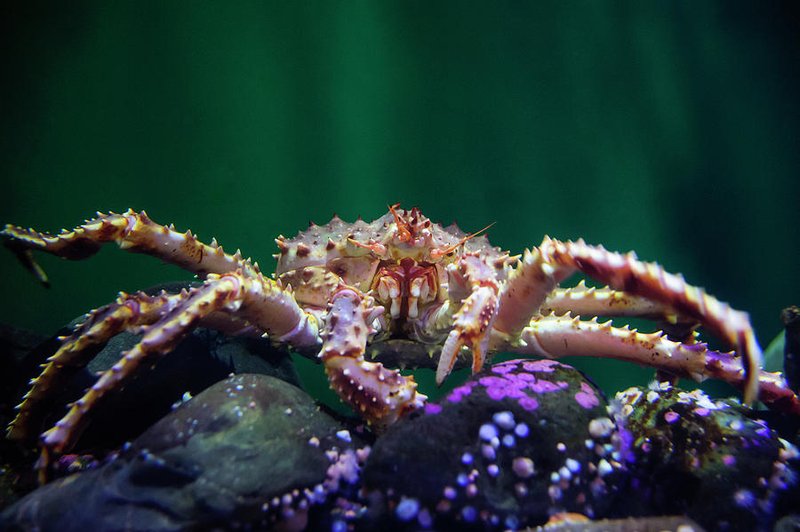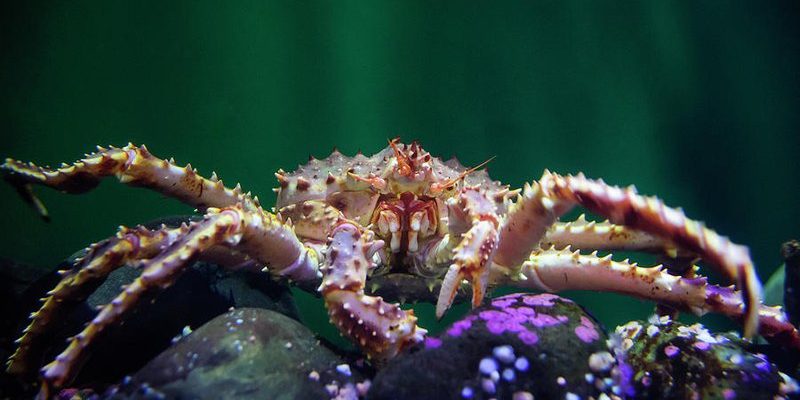
King crabs are fascinating creatures, not just for their culinary appeal but also for their role in the ecosystem. However, as we tap into discussions about conservation, it’s essential to understand the balance between human consumption and the health of marine environments. In this article, we’ll explore the status of king crabs, the factors threatening their existence, and the conservation efforts underway to ensure their future.
Understanding King Crabs
King crabs are part of the Paralithodes genus, and they’re often the stars of seafood menus everywhere. Known for their long legs and hard shells, these crabs can weigh up to 24 pounds and measure 5 feet across. They primarily inhabit cold waters, with species like the red king crab found around the coasts of Alaska and Russia.
You might be wondering what makes king crabs so special beyond their taste. Well, they play a crucial role in their ecosystems by serving as both predators and prey. They help maintain the balance of their habitats by controlling the populations of smaller marine organisms. Plus, their massive size makes them an attractive target for both commercial and recreational fishing.
However, it’s important to note that not all king crabs are created equal. Different species have varying populations and conservation statuses, some thriving while others face more severe threats.
The Current Status of King Crabs
While some king crab populations, like the blue king crab, have been experiencing steep declines, the situation varies across species. The status of these crabs is often assessed through scientific research and catch data. For example, in Alaska, the red king crab population has been relatively stable, but localized overfishing and environmental changes have threatened others.
In 2020, the Alaska Department of Fish and Game found that the blue king crab population had dropped significantly, prompting lawmakers to enforce stricter regulations. Catch limits were reduced to help the species recover, highlighting the need for immediate action.
It’s a bit like trying to keep a garden healthy; if one flower starts wilting, you need to take a closer look and adjust your care. The fluctuating populations of king crabs remind us that marine ecosystems require careful monitoring and management to thrive.
Threats to King Crab Populations
Several factors threaten the survival of king crabs. Overfishing is one of the biggest culprits. As demand for crab meat increases, fishermen may unintentionally catch too many, leading to a decline in populations. Unsustainable fishing practices can also damage breeding grounds, making recovery more challenging.
Another significant threat comes from climate change. Warmer ocean temperatures can disrupt the habitat where king crabs thrive. For example, as waters warm, the distribution of prey species may shift, impacting the crabs’ access to food. Additionally, changes in ocean acidity can affect their ability to grow and reproduce.
Finally, habitat destruction from pollution and industrial activities poses another hurdle for these majestic crustaceans. Nutrient runoff from agriculture can lead to algal blooms, which deplete oxygen levels in the water, affecting crab survival.
Current Conservation Efforts
So, what’s being done to help king crabs? Conservation efforts are underway at various levels to ensure the sustainability of these species. Local governments, like the Alaska Department of Fish and Game, regularly monitor crab populations and establish fishing quotas to prevent overfishing.
Moreover, organizations are working to improve fishing practices by promoting sustainable methods. Fishermen are encouraged to use gear that minimizes bycatch, which can harm other marine life. This approach helps maintain the balance within marine ecosystems.
Public awareness campaigns are also essential. By educating consumers about sustainable seafood choices and the importance of conservation, we can support efforts to protect king crabs and other vulnerable marine species.
How You Can Help
You might be wondering how you can contribute to the conservation of king crabs. Here are some practical steps you can take:
- Choose sustainable seafood: When dining out or shopping, look for certifications like the Marine Stewardship Council (MSC) label that indicate sustainable fishing practices.
- Spread awareness: Talk about king crab conservation with friends and family. The more people are aware of the issue, the more pressure there is for change.
- Support conservation organizations: Consider donating to or volunteering with organizations focused on marine conservation. Every little bit helps!
By being mindful of your seafood choices and sharing information with others, you contribute to the larger conservation effort that can make a difference for king crabs and their habitats.
The Future of King Crabs
Looking ahead, the future of king crabs really depends on our actions today. As consumers, we play a crucial role in their conservation. With increasing awareness and responsible fishing practices, there’s hope for a brighter future for these stunning creatures.
Scientists and conservationists continue to research and advocate for sustainable practices, but it’s essential for everyone to get involved. After all, healthy marine ecosystems benefit not just king crabs but a multitude of other species, including those we enjoy eating.
In conclusion, while king crabs face several threats today, dedicated conservation efforts and informed consumer choices can turn the tide in their favor. So next time you sit down to enjoy a plate of king crab legs, remember the importance of being a mindful consumer and advocate for ocean health. Together, we can help ensure that future generations will be able to savor this delicious delicacy for years to come.

